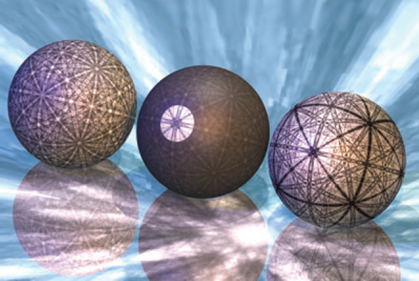14th July 2021 | Author: Dr Pat Trimby
Welcoming a new face to our EBSD team
Electron backscatter diffraction (EBSD) is an addictive technique: somehow, unlike other more widely accessible analytical techniques, EBSD manages to get under your skin. If you attend any of the specialist EBSD conferences, such as those organised by the Royal Microscopical Society here in the UK or the Microanalysis Society in the US, you will come across many of the same faces that were at the forefront of EBSD development in the 1990s and early 2000s.
Indeed, many of the EBSD specialists that are working for companies like Oxford Instruments were also involved in those heady days of early commercial EBSD; it seems to be very difficult for us to move on! The only other microscopy field that has a similar feeling is, I believe, the electron microprobe community (although I expect many involved in transmission electron microscopy, atomic force microscopy or atom probe microscopy might disagree with me).
What makes EBSD so special?
I believe that it is a combination of factors. Firstly, it is a relatively complex technique, requiring at least some level of understanding of crystallography, electron diffraction, 3-dimensional orientation information and so on. It takes a certain level of effort to really get to grips with EBSD and to know how to use the technique to get a better understanding of your samples. And secondly, there is so much innovation in the EBSD community. Just look at what people are doing with the technique that had not even been considered 10 or 15 years ago; transmission Kikuchi diffraction (TKD), dynamical EBSD pattern simulation and associated pattern matching techniques, dictionary and spherical indexing, machine-learning based classification, advanced dislocation analysis, so-called “high resolution” EBSD… I could go on and on.
From a commercial perspective, this creates plenty of opportunities but also plenty of challenges; where should we focus our efforts? Clearly, we cannot and should not try to pursue every technique development, but in order to maintain our position at the forefront of commercial EBSD, we do need to strive for continual innovation.
At Oxford Instruments, we have a dedicated team of EBSD technologists and software developers who are constantly looking to define the next generation of EBSD products. This is the team that not only developed the Symmetry CMOS detector, revolutionising EBSD with its unique all-round performance, but has also been responsible for many of the incremental improvements that have continued to maintain AZtec’s position as the ultimate EBSD acquisition platform. However, we have another secret weapon up our sleeve.
For well over a decade now, we have drawn upon the EBSD expertise of a small company called ST Development. Originally set up in Denmark by Niels-Henrik Schmidt (the founder of HKL Technology) and his colleague Knud Thomsen, ST Development has been invaluable in helping us to deliver exciting new innovations, such as our patented Refined Accuracy indexing, enhanced band detection for TKD or the recently released dynamic shadow masking tool in AZtec.
In 2014, ST Development welcomed to their team another of the early EBSD developers, Dr Klaus Mehnert, and Klaus has spent most of the past 4 years focusing on EBSD data processing: many of you will recognise the fruits of his labour in the form of the exciting, new tools now available within AZtecCrystal, such as elastic properties analysis and parent grain reconstruction.
Although Knud and Niels-Henrik have now retired from ST Development, the ST team has been boosted by the recent arrival of a well-known EBSD expert: Dr Aimo Winkelmann. Many in the EBSD community will be familiar with Aimo’s work; indeed, he was the original pioneer of dynamical EBSD pattern simulations, starting with simulations of electron channelling patterns as far back as 2003 and moving on to the exquisite simulations of EBSD patterns that we commonly see today (e.g. Winkelmann et al., (2007) Many-beam dynamical simulation of electron backscatter diffraction patterns. Ultramicroscopy 107, 414–421).

Examples of dynamical simulations in spherical form, showing EBSD (left sphere), CBED (right sphere) and a combination of coherent and incoherent scattering (centre sphere). Taken from Winkelmann, Journal of Microscopy, Vol. 239, 2010, pp. 32–45.
Aimo has also been involved in a whole range of novel developments and applications of the EBSD technique, such as measuring the polarity of semiconductors, mapping the unit cell tetragonality in martensite or understanding the nature of defects in thin films. With a background in Physics and an impressive skill set in programming (as well as some intriguing hobbies, such as watching the most English of sports, snooker, and collecting boomerangs), we are absolutely delighted to have Aimo on board and look forward to his positive impact on our EBSD product development in the coming years.
Welcome to our EBSD team, Aimo!





